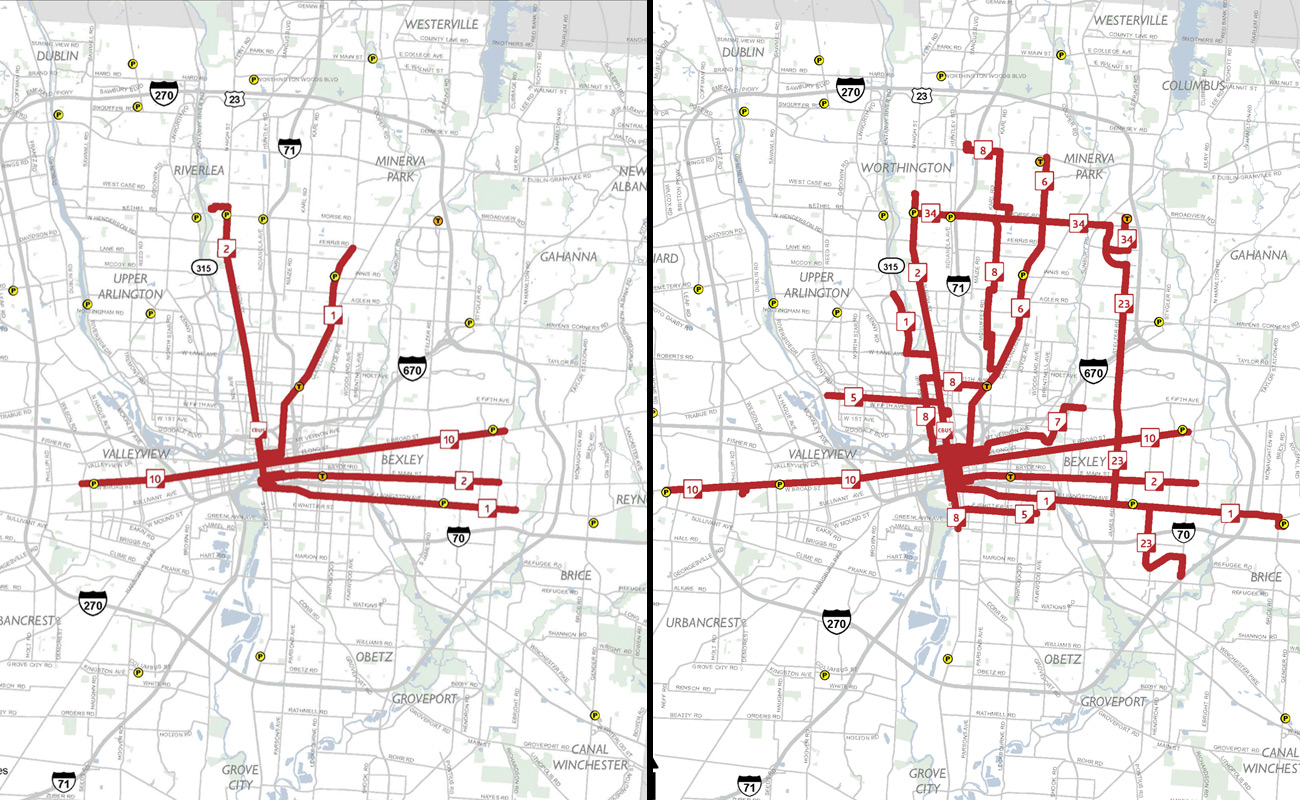Columbus, Ohio, is following Houston's lead and overhauling its bus network to make the system more useful to more people.
On May 1, the city's transit agency, COTA, will kick off new service patterns after an extensive process of rethinking it from the ground up -- with help from some of the same people who redesigned Houston Metro's bus network.
Brent Warren at Columbus Underground interviewed three COTA leaders -- Curtis Stitt, Josh Sikich and Michael Bradley -- about what's coming. The redesigned system will dramatically increase access to bus service that arrives at least every 15 minutes all day, bringing the number of people living within a quarter mile of frequent service from 116,000 to 219,000. It will also increase weekend service and straighten out routes, creating a more grid-like network that can better serve growing suburban job centers.
Warren explains:
The transit consultant Jarrett Walker, who was brought on by COTA early in the process to help to design the new network, argued at the time that adding so many new high-frequency routes will drastically improve the experience of riding the bus in Columbus. It will make connections between routes much easier and eliminate the inconvenience of long waits, which makes people feel trapped and not in control of their journey. It is also the key to increasing overall ridership on the network, he said.
“Instead of having good service for five days and low frequencies on Saturday, and even lower on Sunday, the service will look pretty much the same seven days a week,” said Stitt. “People work on Saturdays and Sundays, so in order to make the service attractive, it’s important to add more consistent, reliable and frequent service.”
Other cities that have done similar redesigns -- like Houston, Jacksonville and Richmond, VA -- have seen big upticks in ridership on the weekends.
When COTA started, in 1974, downtown was the primary employment center in the metro area. The bus system at that time reflected that -- and was in fact largely based on old streetcar routes that dated from a time when jobs were even more clustered downtown. The new system has routes that allow a rider to travel from one suburb to the other without transferring downtown. It also increases service to large jobs centers that didn’t exist forty years ago, like Easton, Rickenbacker, and Polaris.
COTA hopes the redesign will increase ridership by 10 percent in three years. Houston's bus network redesign produced a 1.2 percent ridership gain about a year after it debuted.
More recommended reading today: On Medium, Darin Givens writes about how the municipalities surrounding Atlanta are poorly equipped to handle the suburbanization of poverty, because historically the same towns tried to exclude lower-income people by strangling transit. And Transport Providence makes the case for retaining Rhode Island's car tax.






